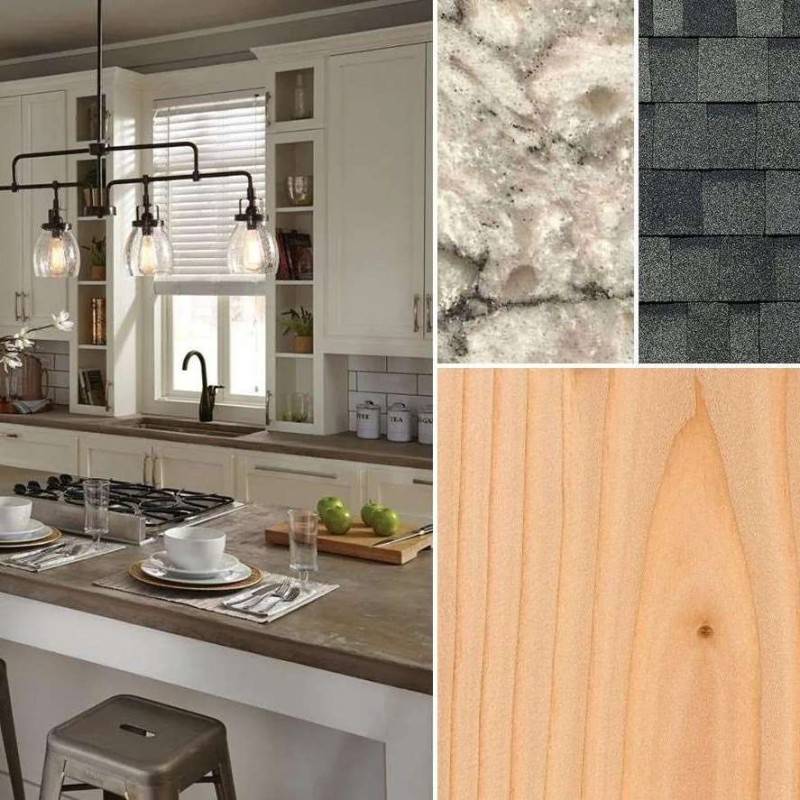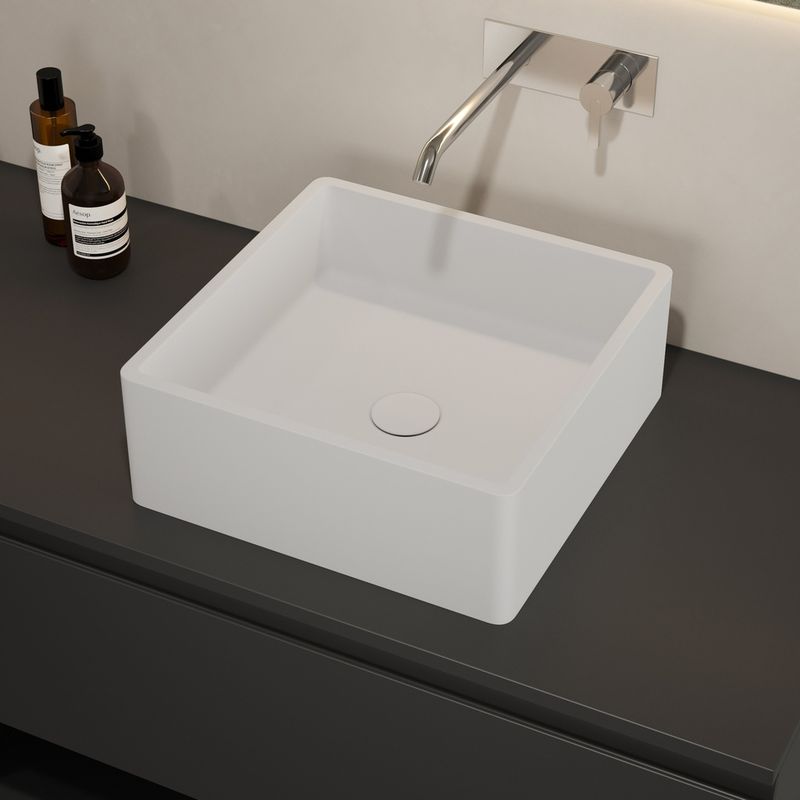 English
English
Jabra Sanitary is a sanitaryware supplier offering toilets, sinks, faucets, bathtubs, etc., at competitive prices. If you're a distributor, wholesaler, or project contractor, get a quote today!
 $23.9 Limited-time Offer
$23.9 Limited-time Offer Consignment Policy
Consignment Policy 20 Years of Experience
20 Years of Experience
Finding the right toilet seat can make a significant difference in bathroom comfort, stability, and overall satisfaction. Toilet seats typically last around five years, depending on their material and usage. Over time, wear and tear are inevitable, meaning it's normal to need a new seat every few years.
Knowing how to measure a toilet seat properly is essential, especially when you need to buy a replacement. Without the correct measurements, it's easy to end up with a toilet seat that wobbles, slides, or doesn't provide full coverage. This guide will walk you through each step of measuring a toilet seat, helping you choose a seat that fits perfectly and meets your comfort needs.
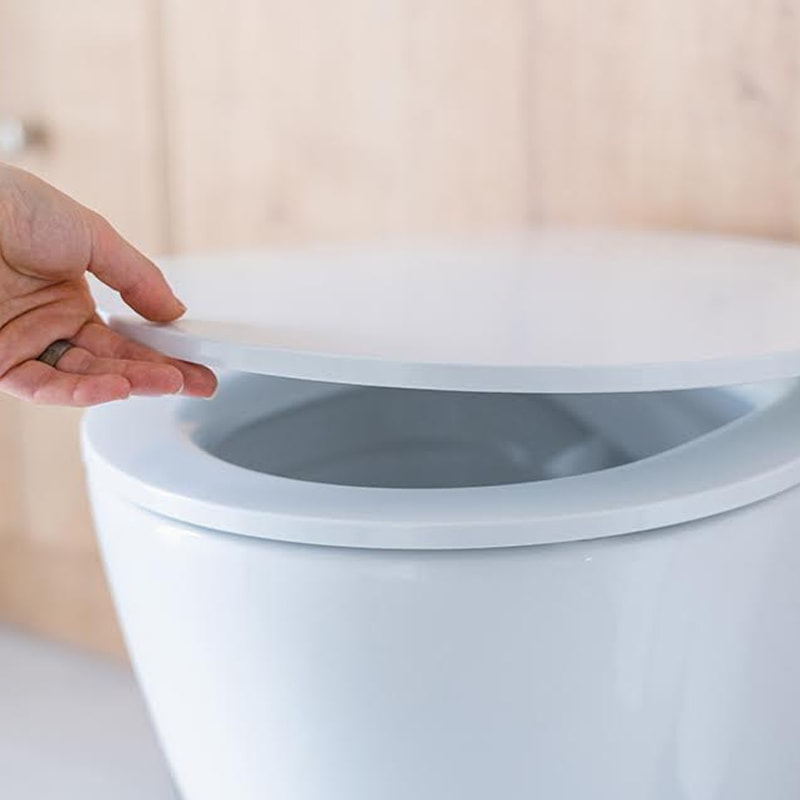
Table of Contents
Do Toilet Seats Come in Different Sizes?
What Are the Standard Toilet Seat Sizes?
How Do You Measure for a Toilet Seat Replacement?
How to Measure a Toilet Seat: A Step-by-Step Guide
Specialty Shapes: Measuring D-Shaped and Square Toilet Seats
Tips for Measuring Toilet Seats
How to Take Toilet Rough-In Measurements
Installation Tips for Your Toilet Seat
Toilet Seats Care and Clean
FAQs: Common Questions About Toilet Seat Sizes and Measurements
Conclusion
Do Toilet Seats Come in Different Sizes?
One of the most common questions is "do toilet seats come in different sizes?" Unlike other household fixtures, toilet seats aren't categorized by standard sizes such as small, medium, or large. Instead, they're defined by shape, with each shape corresponding to a specific measurement range.
Choosing the right seat size involves knowing how to tell if your toilet seat is round or elongated and selecting a compatible size to match the toilet bowl's contours.
Here's an overview of the different toilet seat shapes you'll encounter when shopping:
- Round Toilet Seats: Round toilet seats are the traditional shape, with a circular front that fits round toilet bowls. This type of seat is often more compact, making it ideal for bathrooms with limited space.
- Elongated Toilet Seats: Elongated seats are oval-shaped, offering additional length and support. Many people find elongated seats more comfortable, as they provide a larger seating area.
- Compact Elongated Toilet Seats: These seats resemble elongated models but are slightly shorter, a great option for smaller bathrooms where space is limited. Despite their size, they offer much of the comfort of a full elongated seat.
- Square Toilet Seats: Square toilet seats have a modern look and fit a distinct type of bowl with four corners. Although less common, they're a stylish option in contemporary bathrooms.
Knowing your toilet's shape can be the first step in how to figure out toilet seat size that's compatible with your bowl. Matching the seat shape with the bowl's shape is essential for achieving a comfortable, secure fit.
What Are the Standard Toilet Seat Sizes?
Toilet seat sizes are based on the measurements of the bowl. There are a few standard dimensions that most toilet bowls and seats adhere to, though it's crucial to confirm these measurements before making a purchase. Let's break down the typical dimensions for each toilet bowl shape:
Round Toilet Bowl Dimensions: Round bowls typically measure 16 to 17 inches from the center of the seat bolts to the front edge of the bowl. If you're unsure, measure the length of your bowl carefully to confirm it matches the standard round toilet seat size.
Elongated Toilet Bowl Dimensions: The elongated bowl size is longer, usually measuring between 18 and 19 inches from the bolt holes to the front edge. Elongated seats are a popular choice due to the added comfort they provide.
Compact Elongated Bowl Dimensions: Although shorter than standard elongated seats, compact elongated seats still measure between 18 and 19 inches in length. These seats provide the benefits of an elongated seat while taking up less space.
Square Toilet Bowl Dimensions: Square toilet bowls are unique due to their shape, making them immediately recognizable. Since they don't have a standard length measurement, simply match the square shape with a compatible square toilet seat for a proper fit.
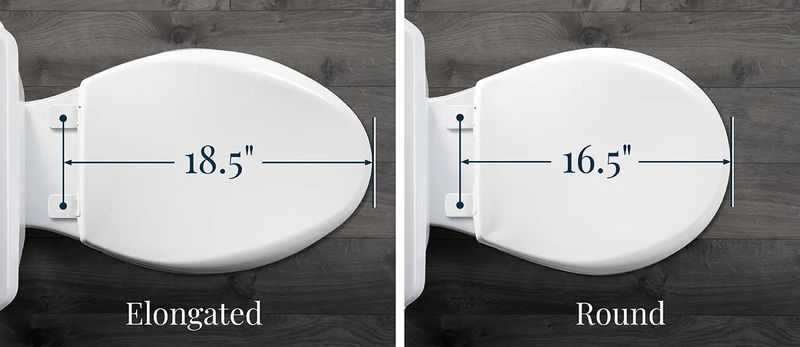
By familiarizing yourself with these standard dimensions, you can select the correct size and shape for your toilet bowl, ensuring optimal comfort and a secure installation. These size guidelines make it easier to measure for a new toilet seat without having to guess which dimensions to prioritize.
How Do You Measure for a Toilet Seat Replacement?
Whether you're installing a new toilet seat or replacing an old one, you'll need accurate measurements to ensure a proper fit. Measuring for a toilet seat is straightforward, but it's crucial to have the right tools on hand and understand the key measurements. Here's what you'll need:
- Measuring Tape: A flexible measuring tape is ideal, as it allows you to capture both the width and length accurately, even around the curves of a round or elongated bowl.
- Notepad or Smartphone: Keep a record of your measurements. You can jot them down on a notepad or save them in your smartphone for easy reference.
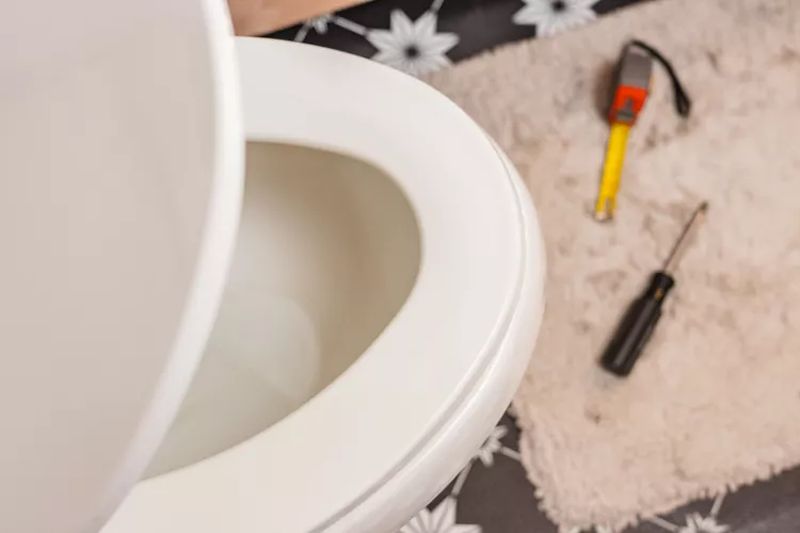
It's also wise to check if your toilet requires a specific brand or model. Certain designer toilet models need proprietary toilet seat sizes that are custom-made. If you're unsure, check the toilet's specifications or consult the manufacturer to confirm.
How to Measure a Toilet Seat: A Step-by-Step Guide
With your measuring tools ready, it's time to get precise measurements.
Follow these steps to learn how to measure the toilet seat accurately:
1. Measure Bolt Distance
Begin by locating the two bolts that attach the toilet seat to the bowl. Measure the distance between these bolts.
In the United States, the standard bolt distance is 5.5 inches, though it can vary depending on the toilet brand. This measurement will help you determine whether the seat's bolt alignment will fit your toilet bowl.
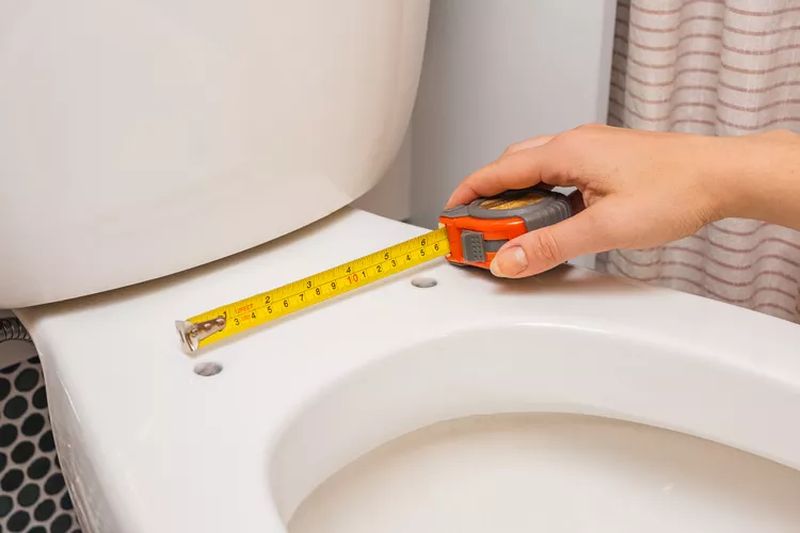
2. Measure Bowl Width
Measure the bowl at its widest point by placing the measuring tape across the brim of the bowl. Accurate width measurement is essential for ensuring a secure fit. Take note of this measurement for reference when shopping for replacement toilet seats.
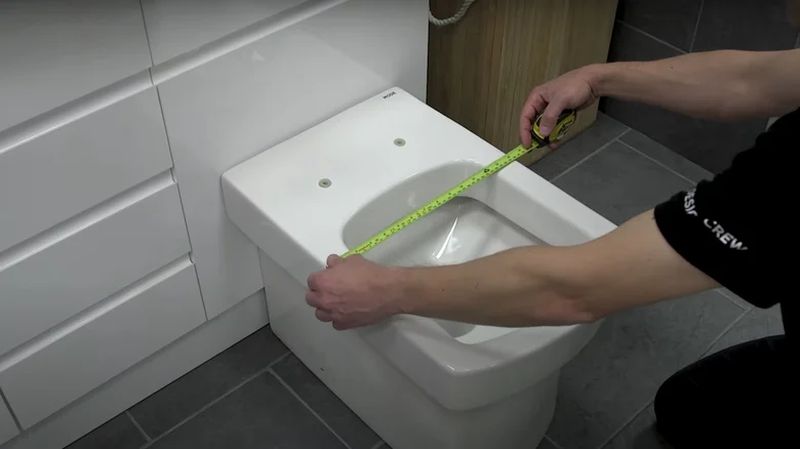
3. Measure Bowl Length
The length of the bowl, also known as the "bowl depth," is measured from the center of the bolt holes to the front edge of the bowl.
For round bowls, this will typically be around 16-17 inches, while elongated bowls usually measure around 18-19 inches. This step is critical in determining how to know what size toilet seat to buy for your specific bowl.
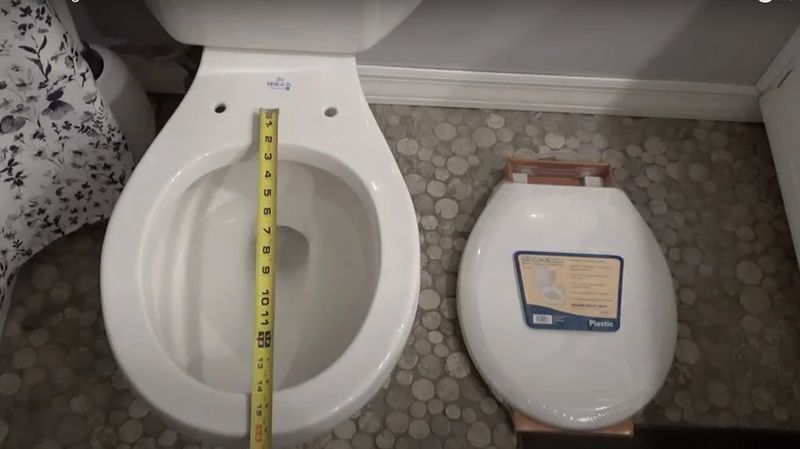
Specialty Shapes: Measuring D-Shaped and Square Toilet Seats
In addition to round and elongated toilet seats, there are specialty shapes, like D-shaped and square seats. These require slightly different measurement methods to ensure an accurate fit.
Here's how to measure for toilet seat replacement when dealing with these unique shapes:
D-Shaped Seats
A D-shaped toilet seat has a rounded front and a flatter back, creating a shape that resembles the letter "D." To measure a D-shaped toilet seat, measure the length from the center of the bolt holes to the front edge of the seat, then measure the width at the widest point of the bowl.
Square Seats
Square toilet seats have a distinctly modern look, with four defined corners. Although less common, they require specific measurements to ensure a snug fit.
Measure the bowl length from the center of the bolt holes to the front edge, then measure the width for this sqare toilet bowl. Pay close attention to the corners to ensure you get a compatible square seat.
These specialty measurements may require extra precision, so consider double-checking your dimensions. Accurate measurements for these shapes are essential in knowing how to measure a toilet seat of unique dimensions and ensuring it matches your bowl exactly.
Tips for Measuring Toilet Seats
When you're measuring for a new toilet seat, even a few small tips can make a big difference in accuracy. Here are some useful tips to help you get the most precise measurements and select the right toilet seat:
1. Measure Twice
One of the oldest sayings in carpentry, "Measure twice, cut once," applies here too. Double-checking your measurements can prevent costly mistakes and ensure you order the correct seat. A quick re-measure can save time, money, and frustration by guaranteeing an accurate fit.
2. Material Differences
Wooden toilet seats tend to be thicker and may sit higher on the toilet bowl, affecting comfort and aesthetics. Plastic seats are usually thinner and lighter, which may be a better fit for some bathrooms.
Understanding the different toilet seat materials <like UF vs. PP toilet seat> will help you choose the right one for your needs.
3. Use a Flexible Measuring Tape
A flexible tape is ideal for measuring the bowl, especially around the curves. Rigid rulers can lead to measurement errors, especially if your toilet has unique curves or angles, so opt for a tape measure to capture precise dimensions.
4. Take Photos
If you're uncertain about your measurements, take a photo of the bowl with the measuring tape in place. This visual reference can be helpful when discussing with a customer service representative or when browsing for seats online.
5. Check Seat Specifications
Before you purchase, verify that the seat is compatible with your toilet bowl's bolt size and shape. Some modern and designer toilets have proprietary attachments that may require a custom seat. Knowing how to buy the right toilet seat includes checking for these details.
6. Measure for Add-On Features
If you're planning to add attachments, like bidets or handles, measure any extra clearance needed. For example, handles or armrests may require additional space between the toilet and the wall, so make sure you have enough room for your planned upgrades.
These tips will make the process smoother and help you find the perfect seat, whether it's a standard, elongated, or specialty shape. Being meticulous in toilet seat measurement ensures you won't have to deal with exchanges or returns later on.
How to Take Toilet Rough-In Measurements
If you're not only replacing the seat but also considering a new toilet installation, then you'll need to understand how to measure the rough-in for your toilet.
Rough-in measurements are essential when measuring for a toilet to make sure it fits within the space available in your bathroom. Here's how to do it:
Measure from the Wall: Start by placing your measuring tape against the wall that the toilet is mounted to. Locate the bolts that secure the toilet to the floor and measure the distance from the wall to the center of these bolts. This distance is called the rough-in. In the United States, the standard rough-in measurement is 12 inches, though some toilets may have a rough-in of 10 or 14 inches.
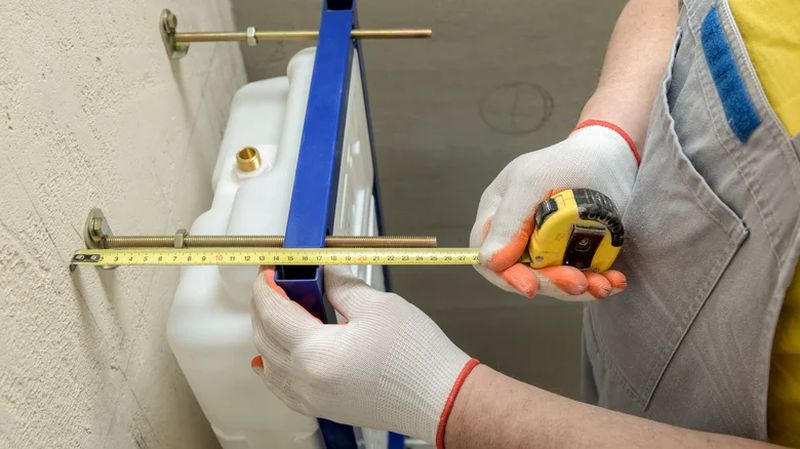
Measure Toilet Length: When selecting a new toilet, measure the length from the bolt holes to the back of the toilet. As long as this measurement is less than the rough-in you measured earlier, the toilet should fit properly in your bathroom.
Check Side Clearances: In tight spaces, measure the distance between the flange bolts and nearby walls or fixtures. This ensures your new toilet won't be too large or obstructed by other elements in the bathroom.
Taking rough-in measurements ensures your new toilet will fit comfortably in the available space, preventing issues with installation or clearance. This step is particularly important if you have limited room or if you're choosing a specialty toilet model with a unique shape.
Installation Tips for Your Toilet Seat
Once you've selected the right toilet seat for your bowl, the next step is proper installation. Installing a toilet seat is relatively straightforward, but following these tips will make the process even easier:
Gather Essential Tools: Most toilet seat installations require only basic tools like a screwdriver and a wrench. Double-check the manufacturer's instructions for any additional tools that may be needed, especially if the seat has unique attachments.
Follow Manufacturer's Instructions: Every toilet seat has slightly different instructions for installation. Reading and following these instructions will ensure that your seat is securely attached and functions correctly. This is especially important if you have a seat with snap-on attachments or additional features.
Tighten Bolts Carefully: Secure the bolts enough to prevent movement or wobbling, but avoid overtightening, as this can crack either the seat or the bowl. A snug fit without excessive force is key for a stable, long-lasting installation.
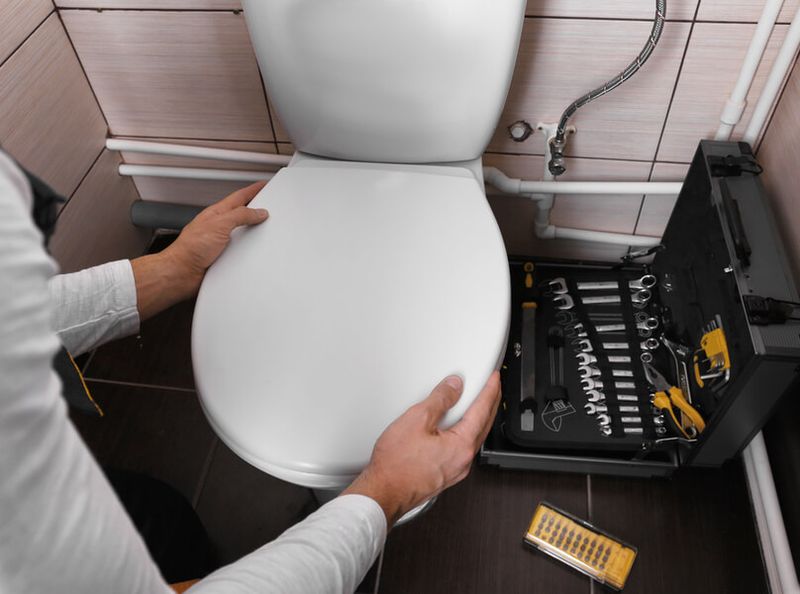
By following these tips, you can ensure a smooth installation and prevent common problems like loose seats or damaged toilet bowls. A well-installed seat enhances your bathroom's comfort and functionality, especially with the right fit and secure attachment.
Toilet Seats Care and Clean
After measuring and installing a new toilet seat, proper maintenance will keep it in good condition for years. Regular cleaning, avoiding harsh chemicals, and periodic checks can extend the life of your seat and maintain your bathroom's hygiene. Here are some practical maintenance tips:
Regular Cleaning: Clean your toilet seat weekly using mild soap and warm water. Avoid abrasive cleaners, which can damage the seat's finish. For wooden toilet seats, use products specifically designed for wood surfaces to prevent discoloration or cracking.

Periodic Tightness Checks: Every few months, check the bolts and hinges to ensure they haven't loosened. A wobbly seat can be both uncomfortable and damaging to the toilet bowl, so tightening the bolts periodically will keep the seat secure.
Avoid Harsh Chemicals: Avoid bleach or strong disinfectants, as they can cause discoloration or wear on certain materials. Stick to mild, non-abrasive cleaning agents to maintain your toilet seat's finish and prevent material degradation.
With these simple care practices, you can enjoy a longer-lasting and more hygienic toilet seat. These steps are essential in keeping your bathroom looking clean and feeling comfortable, and they prevent premature wear and tear on your investment.
FAQs: Common Questions About Toilet Seat Sizes and Measurements
What is the standard-size toilet seat?
Standard toilet seats come in round (typically 16-17 inches) and elongated shapes (usually 18-19 inches). Knowing how to measure for a toilet seat replacement will help you confirm which size fits your bowl.
How do I know if my toilet is round or elongated?
Measure from the center of the bolt holes to the front edge of the toilet bowl. If it measures 16-17 inches, it's round. If it measures 18-19 inches, it's elongated. Understanding how to figure out toilet seat size is essential for choosing the correct replacement.
How do you fit a standard toilet seat?
Align the seat with the bowl, attach it using the bolts provided, and tighten them securely. Following the installation tips above for toilet seats ensures a secure and stable fit.
What if I use a seat that isn't the right size?
Using a seat that doesn't match your bowl's shape or size can lead to discomfort, instability, or even damage to the toilet. This makes toilet seat measurement crucial before purchasing a replacement.
What shape should I buy?
Select a toilet seat shape that matches your bowl shape: round, elongated, compact elongated, or square. Accurate measurements are key in how to know which toilet seat to buy for optimal fit.
Conclusion
Measuring a toilet seat may seem like a small detail, but it plays a significant role in comfort and bathroom functionality. By following the step-by-step measurement process outlined in this guide, you'll be able to select a seat that fits securely, enhances comfort, and complements your bathroom's style.
Remember to check the shape of your bowl, verify dimensions, and take into account any specific requirements, such as brand compatibility or space constraints. Whether you need a standard round or elongated seat or a specialty shape like a D-shaped or square seat, accurate measurements ensure that your new toilet seat will provide the stability and comfort you're looking for.
With the right tools and techniques, measuring for a toilet seat becomes a straightforward task. Ready to upgrade your bathroom? Browse our selection of toilet seats today to find the perfect match and bring comfort and style to your home.









